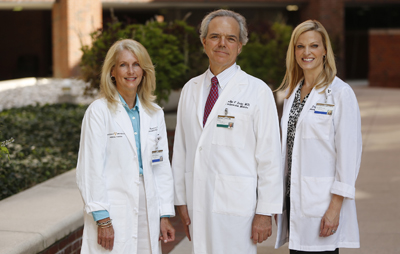Imagine an inherited cause of early heart attacks that is more common than type-1 diabetes, multiple sclerosis or cystic fibrosis, but goes largely unrecognized.
“Everybody recognizes those diseases,” said MacRae Linton, M.D, who directs the Vanderbilt Lipid Clinic. “You say ‘familial hypercholesterolemia’ (FH) and nobody knows what that means.”

Linton and others at Vanderbilt University Medical Center are trying to get the word out about the potentially deadly condition, and Sept. 24 is National FH Awareness Day.
Untreated, FH causes very high levels of cholesterol, particularly levels of LDL (“bad”) cholesterol.
Patients with the disorder are at a higher risk of a potentially deadly heart attack, even at a young age.
While no cure exists, the condition is eminently treatable; with medication, bad cholesterol levels may return to a safe range within four to six weeks, Linton said.
The key is diagnosing the illness and identifying affected family members, the earlier the better.
That can be accomplished by a simple blood test starting at 8 to 12 years of age. If a child has a known relative with FH, guidelines suggest screening as early as 2, said Melanie Allison, DNP, R.N., an instructor at Vanderbilt University School of Nursing who is trying to raise awareness about FH.
That, paired with an understanding of family history of high cholesterol or early heart disease/heart attacks, is essential to pinpointing the condition.
Fifty percent of all first-degree relatives of an individual with FH are likely to have the condition, Allison wrote in an article published this year in the Journal of Cardiovascular Nursing.
But up to 80 percent of Americans with the condition continue to be undiagnosed.
Therefore, it’s important to ask relatives about their cholesterol levels. If a relative has high cholesterol, and/or has an early heart attack, it’s important to come in for a cholesterol test.
Part of the reason more people don’t seek treatment is there are often no symptoms of the disease, Linton said. Plaque on artery walls continues to build silently until a heart attack occurs.
The sooner the disease is diagnosed and treated, the less time plaques have to build.
“You could eliminate many of the early heart attacks in our country — and late ones, for that matter as well — if you could really … target effective prevention to these families,” he said.
That’s why the FH Foundation is building a secure national registry of people with familial hypercholesterolemia — so people can find out if they’re at risk.
The Netherlands has had a successful national registry for years, Allison points out.
“Vanderbilt is one of only 11 sites in the country currently participating in building the registry,” said Beth Meador, ACNS, advanced practice nurse for the Vanderbilt Lipid Clinic and study
coordinator for the FH CASCADE Registry at Vanderbilt. Patients with FH can learn more and join the registry directly at http://thefhfoundation.org/registry/ or call 936-1641 for information about participation.
Adults with LDL-cholesterol readings of 180 mg/dL or more may have the condition, Linton said.
Children with LDL levels of 150 or more may have FH too, particularly if a first-degree relative has it.
Anyone with a relative who had an early heart attack or high cholesterol from an early age could be at risk, Allison said.
“High numbers for LDL cholesterol in a patient with a family history of early heart disease should raise a red flag for the provider that the patient may have familial hypercholesterolemia, and they should consider referring them to a lipid specialist,” she said












